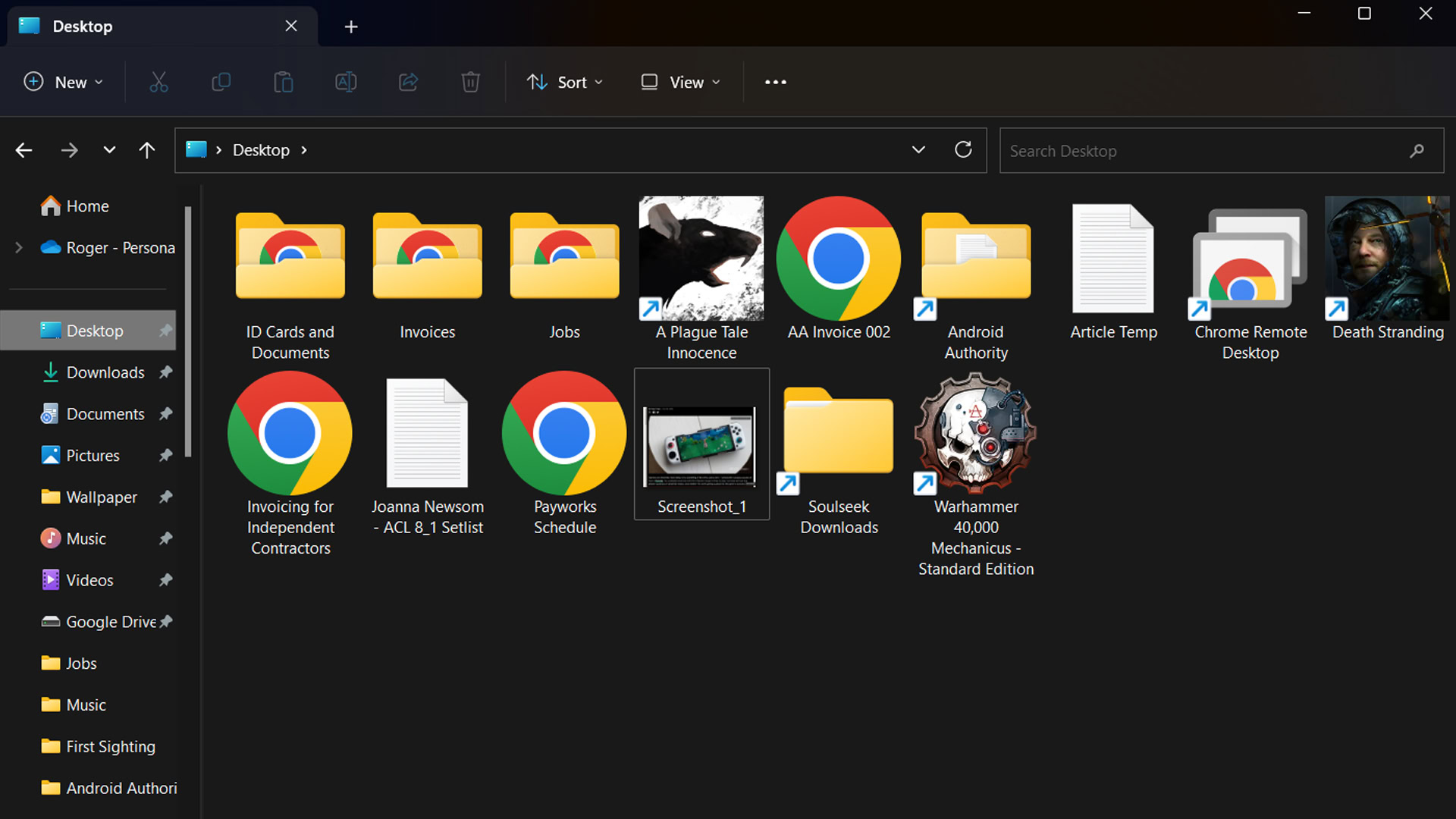Affiliate links on Android Authority may earn us a commission. Learn more.
How to quickly show the desktop on Windows 11
Published onJanuary 12, 2024
If you actually max out the size or number of windows in Microsoft Windows, you’re liable to run into a problem — how to get back to your desktop, where a lot of people stash their app shortcuts. Below we’ll guide you through a few standard ways of showing the Windows 11 desktop, as well as how to access it indirectly via File Explorer.
QUICK ANSWER
To show the Windows 11 desktop:
- Click the Show Desktop button on the rightmost edge of the Windows taskbar.
- Use the Windows + D keyboard shortcut. Hit those keys again to restore your active windows.
JUMP TO KEY SECTIONS
How to quickly show the desktop on Windows 11
There are two main avenues for revealing the desktop. Note that some fullscreen apps (typically games) can play havoc with the first one, but the second should almost always work.
By using the Show Desktop button

Although it’s needlessly hard to spot in our opinion, you can usually reveal a Show Desktop button if you put your mouse cursor over the rightmost edge of the Windows taskbar. If the taskbar is hidden by default in your Windows configuration, just bring your cursor to the bottom of the screen first.
If the button seems to be missing entirely, follow these steps to make sure it’s active:
- Right-click on any empty (non-icon) space in the taskbar.
- Select Taskbar settings.
- Click Taskbar behaviors, then Select the far corner of the taskbar to show the desktop.
By using keyboard shortcuts
There are three keyboard shortcuts available, though realistically, you’ll want to use the first one most of the time.
- Windows + D hides all windows. More importantly, you can revert to your previous window state by hitting the same shortcut again.
- Windows + M minimizes open windows. You can’t directly reverse this, although you can accomplish something similar by hitting Windows + Shift + M to maximize.
- Windows + , (the Windows key and the comma) “peeks” at the desktop. There’s not much point to this, since the view lasts only as long as you hold the two keys down.
How to go to Desktop in File Explorer

A roundabout way of getting to the desktop is via File Explorer. This isn’t a complete substitute, since some icons may be missing, but you can still open most apps and documents.
- Open File Explorer using its taskbar icon or the Windows search bar.
- Click on Desktop in the left-hand sidebar. If the sidebar isn’t visible, use View > Show > Navigation Pane. If there’s still no Desktop option, use the following steps.
- Select the Home icon in the sidebar.
- Click the up arrow in the navigation buttons.
- Right-click on the Desktop icon and choose Pin to Quick access.